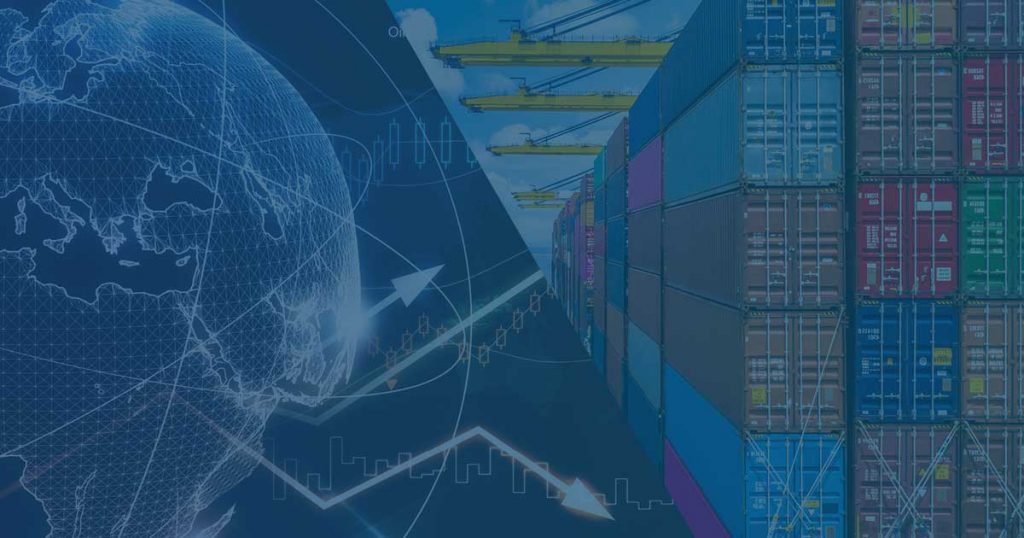
The Oceanic Logistics Industry Plays A Crucial Role In Global Trade, But Various Factors Such As Fuel Costs, Demand, Distance, And Seasonality Affect Ocean Freight Rates. Regulations, Supply Chain Disruptions, And Geopolitical Risks Also Impact The Industry. The Type Of Vessel And Trade Routes Used Can Affect Commodity Exposure And Consumer Food Prices. Shipping Companies Will Have To Include CO2 Emission Costs In Their Charges Starting In 2024. Policy Flexibility And Collaboration Are Needed To Address Global Issues Such As Peace, Climate Change, And Food Insecurity.
Key takeaways
- Determinants of freight rates in the shipping industry: Fuel costs, demand, seasonality, distance, and service charges
- Rising dry bulk freight rates and grain prices: Potential impact on consumer food prices
- New environmental regulations in 2024: Shipping companies to factor in CO2 emissions into freight charges
- Importance of flexible fiscal policy and policy implementation in maintaining resilience
- Global collaboration to tackle global problems: Peace, climate change, and food insecurity
- Robust frameworks to address debt-related challenges and COVID-19’s impact on global poverty and inequality
Determinants of Freight Rates in the Oceanic Logistics Industry
Factors within the shipping industry can affect ocean freight rates. These include:
- Fuel costs
- Demands
- Cargo type
- Distance, and service charges
- Geopolitical risks
- Government regulations
- Reputation
- Supply chain disruptions.
Short-term fluctuations in rates are due to seasonality, while long-term fluctuations depend on changes in the economies of countries involved in importing and exporting. The global fleet size, utilisation rates, and disruptions to free movement impact the supply of shipping services.
Commodity Exposure to Freight Rates
When there are large drops in commodity prices, the impact on freight rates is significant. This creates shock within the system.
Choice of vessel type and trade route
Ships are sailing at a slower speed due to the increase in fuel prices and the prices for carbon emissions. The larger size of the vessel also plays a role in the reduction of costs.
Consumer food prices linked to Freight
According to reports, consumer food prices could increase due to a rise in dry bulk freight rates and grain prices, impacting the cost of food.
Environmental Regulations and the Cost of Freight
From 2024, shipping companies will need to include the cost of CO2 emissions in their freight charges. This is to reduce the carbon footprint in the shipping industry, encouraging companies to operate in an eco-friendly manner. The industry is currently exploring various options to reduce its carbon footprint. This includes transitioning to cleaner sources of fuel, such as wind power and green hydrogen, adopting battery storage, optimising travel routes, and implementing other sustainable practices. By embracing these initiatives, the industry aims to make significant strides towards a greener future.
Flexible Fiscal Policy
During difficult periods, it’s helpful to adjust fiscal policy. Flexible policies assist companies to maintain resilience and adapt to changing circumstances.
Global Collaboration Crucial
Global problems can be tackled by collaboration. Areas to address include:
- Climate change
- Food insecurity
- Peace in Europe.
The global climate crisis and its challenges have made food production difficult and vulnerable. By engaging stakeholders at all levels, it may be possible to transform food systems to be sustainable and ensure food security.
Debt and Poverty Report
The Global Economic Prospects report highlights the need for robust frameworks to deal with debt-related challenges. Global growth is expected to slow down to similar levels as in 2009 and 2020, and small states are especially vulnerable to economic shocks. Immediate policy action is needed to bolster growth and investment. Progress to reduce poverty has halted. The COVID-19 pandemic has caused income losses for the poorest 40%, resulting in the largest increase in global inequality since World War II.
Conclusion
The oceanic logistics trends for 2023 focus on CII ratings and EU ETS regulations, collaboration to reduce food insecurity and work towards peace in Europe. Flexible policies and a willingness to adjust are therefore vital.


